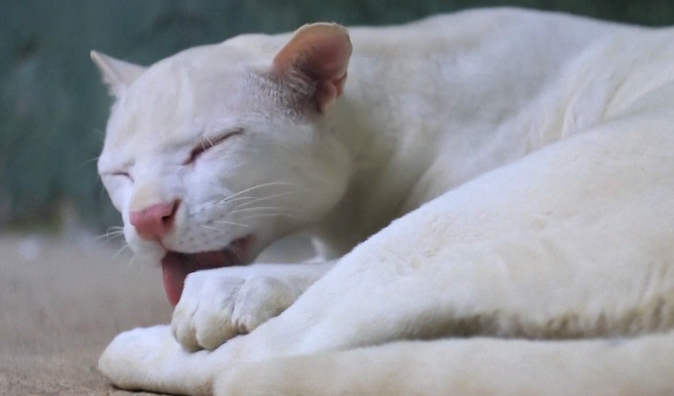Madrid The Municipal Police rescues an albino python in a VTC
Colombia
confirmed the first case of an albino ocelot of which there is information after performing genetic tests on a cat with white fur and red eyes that remains under protection in
Antioquia
, in the northwest of the country.
The albino feline was found a year ago when she was still a cub weighing only 440 grams in the rural area of
Amalfi
- a municipality in Antioquia - and was initially provisionally identified as a puma yagouaroundi.
"The tests consisted of the sequencing of the cytochrome oxidase I (CO-I) and NADH dehydrogenase 5 (ND5) genes present in the mitochondrial genome, which differs between the different species of cats," the company explained in a statement last Thursday. environmental authority of Antioquia,
Corantioquia
.
The albino ocelot when she was a baby.TWITTER
With the genetic tests, its species
leopardus pardalis
, commonly known as an ocelot, which lives from the forests and even the moors of the American continent, was confirmed.
The species has been listed in the "least concern" category on the
International Union for Conservation of Nature's
red list of threatened species .
The feline, considered "extremely unusual", reached adulthood and weighs 12.8 kilograms.
Ocelots usually have brown fur, are carnivorous and hunters, however, the albino feline, due to its recessive genetic mutation, could not be released into the wild due to its difficulty in camouflaging itself and blindness.
The Conservation Park, a private entity where the feline was sheltered, built low-height furniture and shallow water areas given her total blindness.
She is fed daily with 700 grams of red meat and chicken.
Normal appearance of an ocelot.E
Ana Ligia Mora
, director of Corantioquia, assured that albinism means that there may be an affectation of the ecosystems that is affecting the development of the species, for which she invited to take care of the forests and fauna in the country.
According to the criteria of The Trust Project
Know more
Genetics

